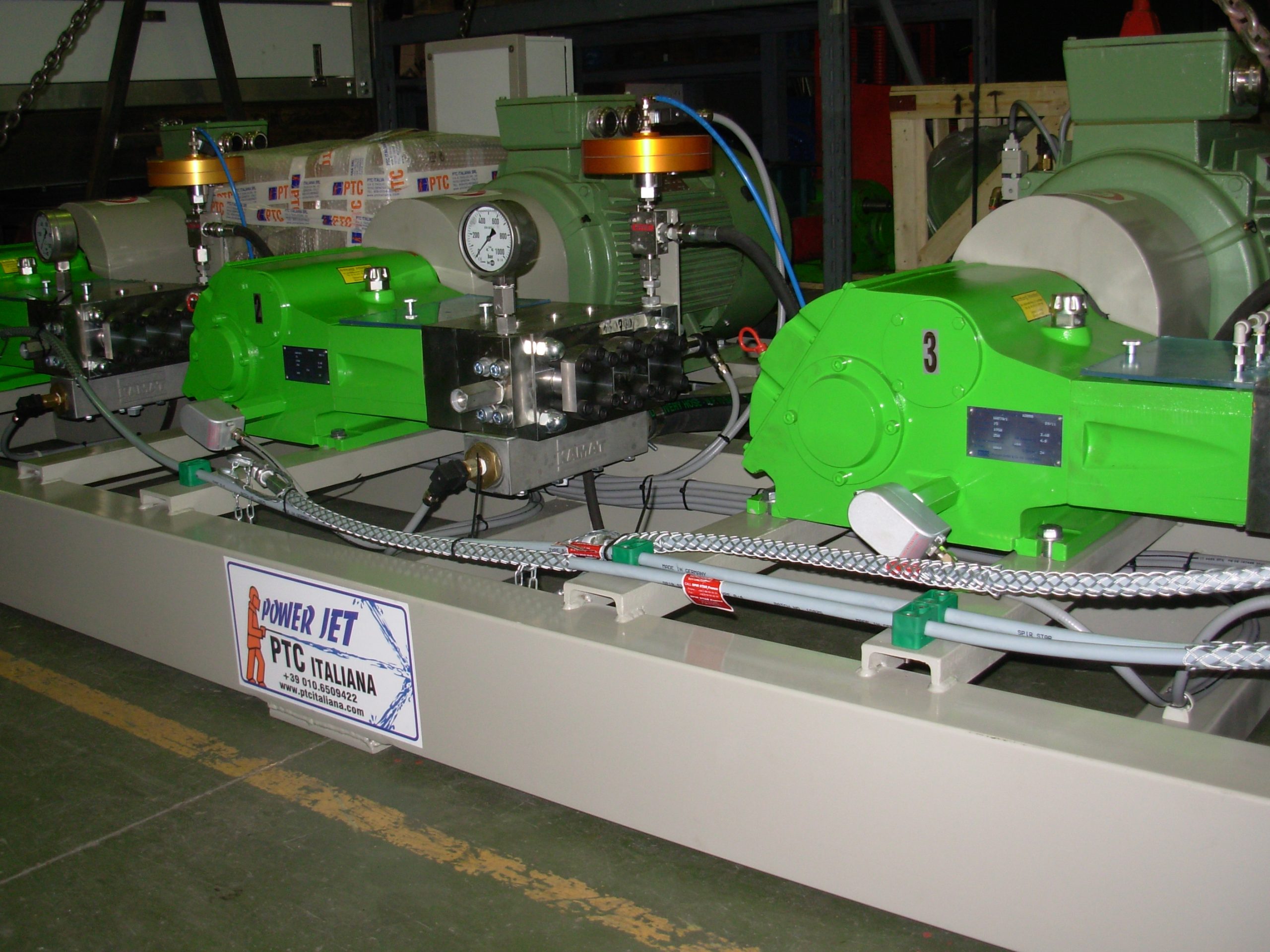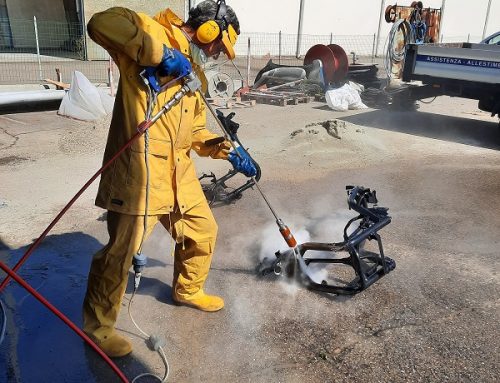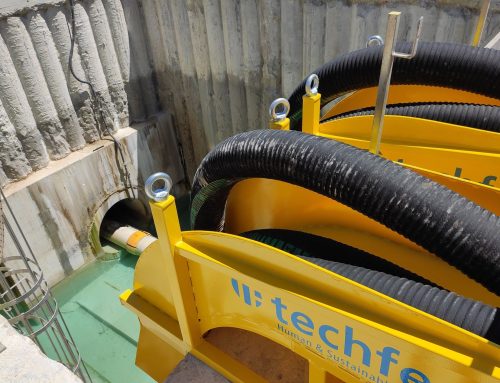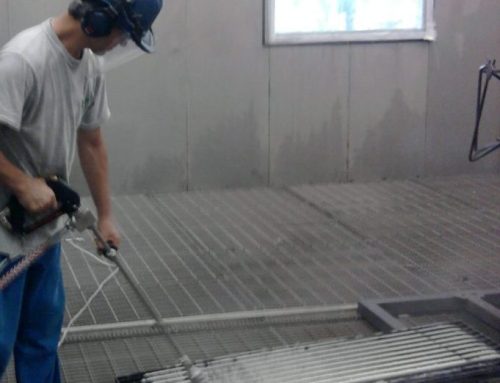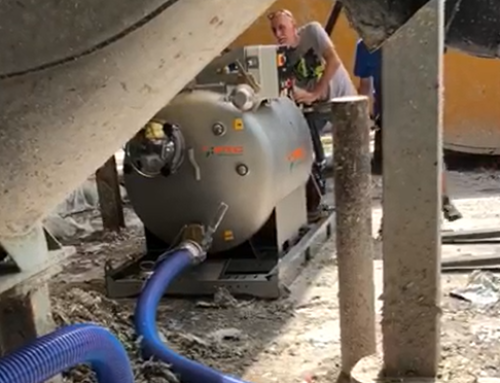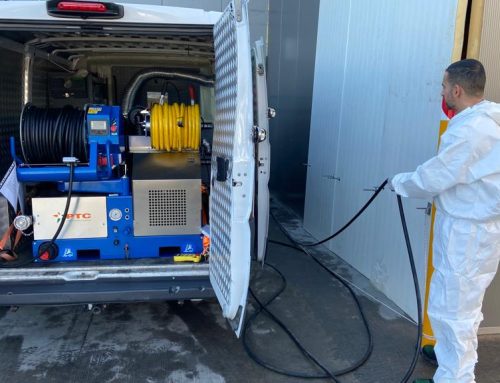High pressure pumps have various applications in numerous professional fields: among these there is also the rubber industry.
In particular, they are used at the end of the production process of high-pressure rubber hoses used in the hydraulic industry for the construction of various systems that include circuits with pressurized oil. For example for machinery such as forklifts and cranes. In the same way, these pipes are produced and used for the transport of pressurized water.
How high pressure hoses are made
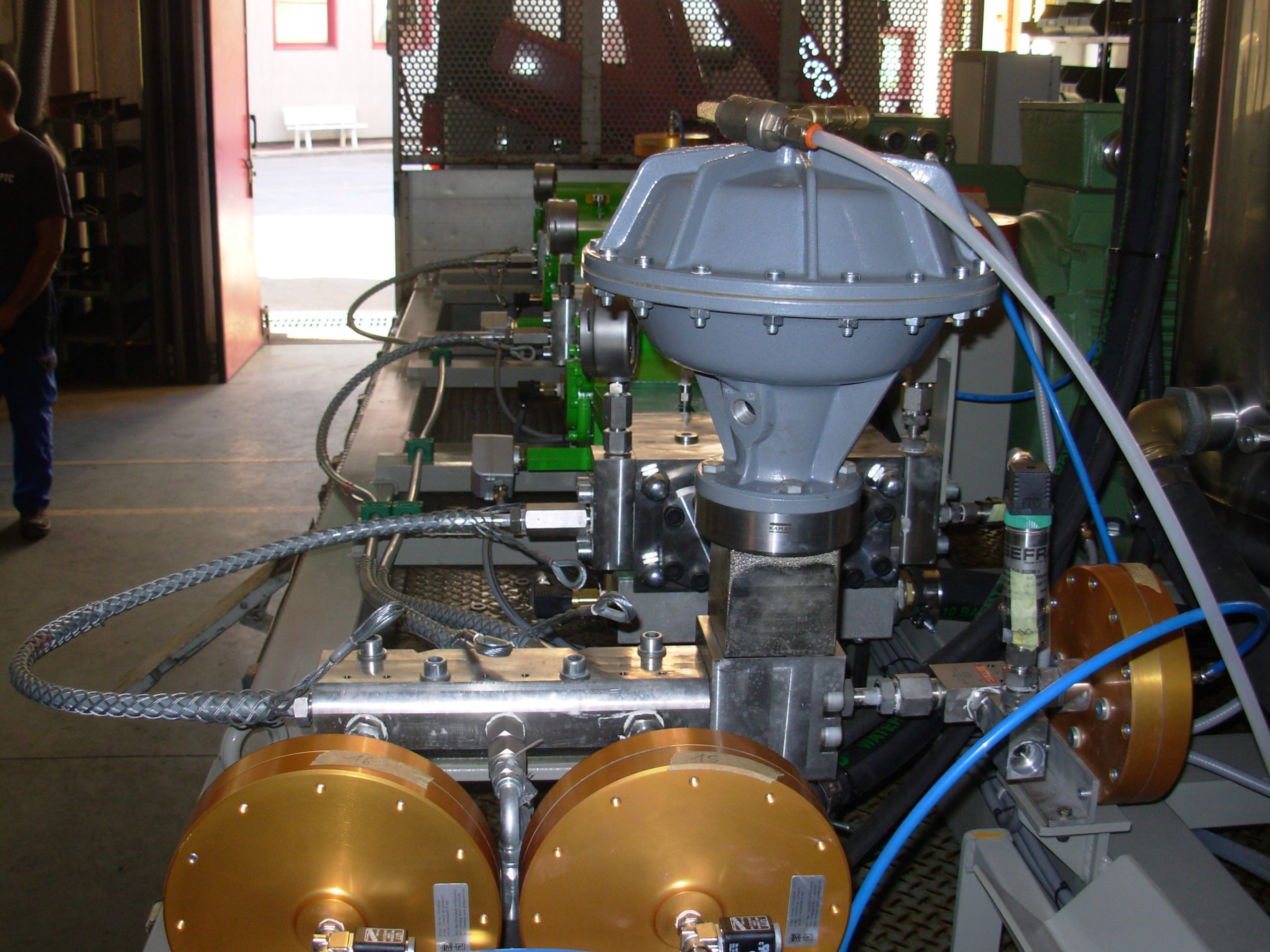
High pressure rubber hoses are based on a plastic core around which steel wires are twisted. Finally, the rubber that covers the outside of the tube is vulcanised onto this structure.
A particular mandrel is used for the processing of the tube, in particular for interweaving steel wires. At the end of the process, the pipe is wound up on a drum in coils that can even reach hundreds of meters of length.
Therefore, once the production process is complete, the mandrel must be extracted from inside the pipe, and here is important water pressure and water blasting units.
Mandrel extraction
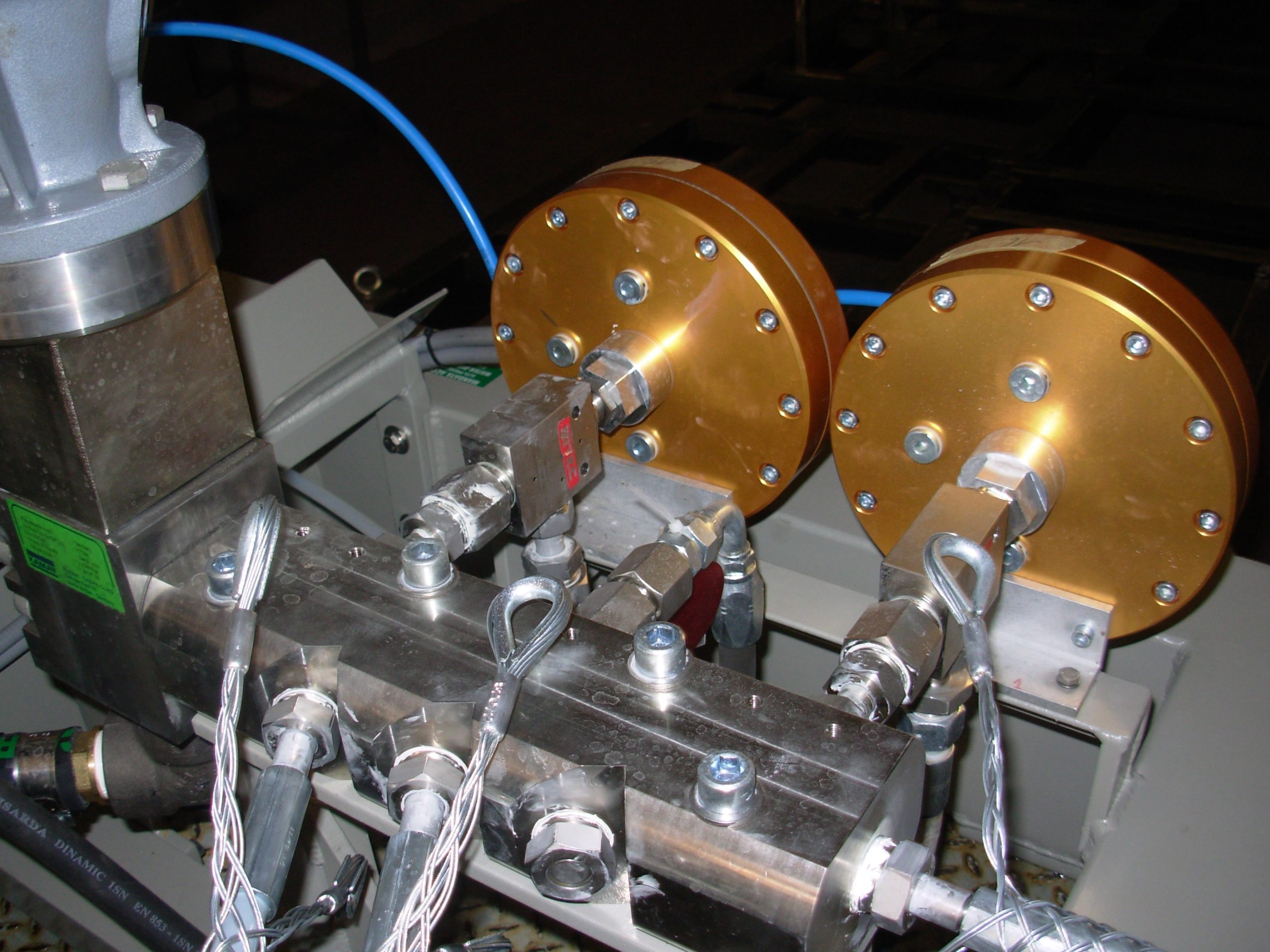
Water blasting units and high pressure pumps are the only consolidated systems in the rubber industry, at least in the last few decades, to extract spindle from the pipes at the end of production process.
PTC has built many plants of this type for the world’s leading pipe manufacturers, both in Italy and abroad. In the images we show, for example, we can see a plant built by PTC for an Italian company that supplied the entire production system to a pipe manufacturer, in two twin units destined for a plant in Thailand, and another industrial site in China.
But how do you extract the spindle?
When the construction is complete, the pipe is connected to clamps and the pumps of the water blasting unit are activated to push the pressurized water inside the pipe. Initially, the flow of water struggles to get out because the mandrel acts as a plug, but in a few moments and without effort it manages to create a cushion between the mandrel inside the pipe and the internal surface of the pipe itself, thus making its way throughout the length of the tube, until it comes out of the end of the coil.
Once out, the thrust of the water produces a mechanical force that causes the spindle to come out of the terminal end.
The proof test
The system composed of the water blasting unit, as well as for the extraction of the mandrel, also intervenes for the testing phase of the pipe, through a verification necessary for the certification and tracking of the production lot.
In fact, when the spindle comes completely out, the pipe is flushed with the pumped water, the pressure drops and a pressure test is carried out to check that the pipe complies with the required specifications.
Once the spindle is set aside, the pipe is connected in a closed circuit, the pumps are set up to pressurize the pipe up to the established test value, at that point the pumps are stopped.
Then the system registers that there are no pressure drops related to potential leaks, in which case the pipe is completely rejected or the defective part is eliminated.
The PTC plant
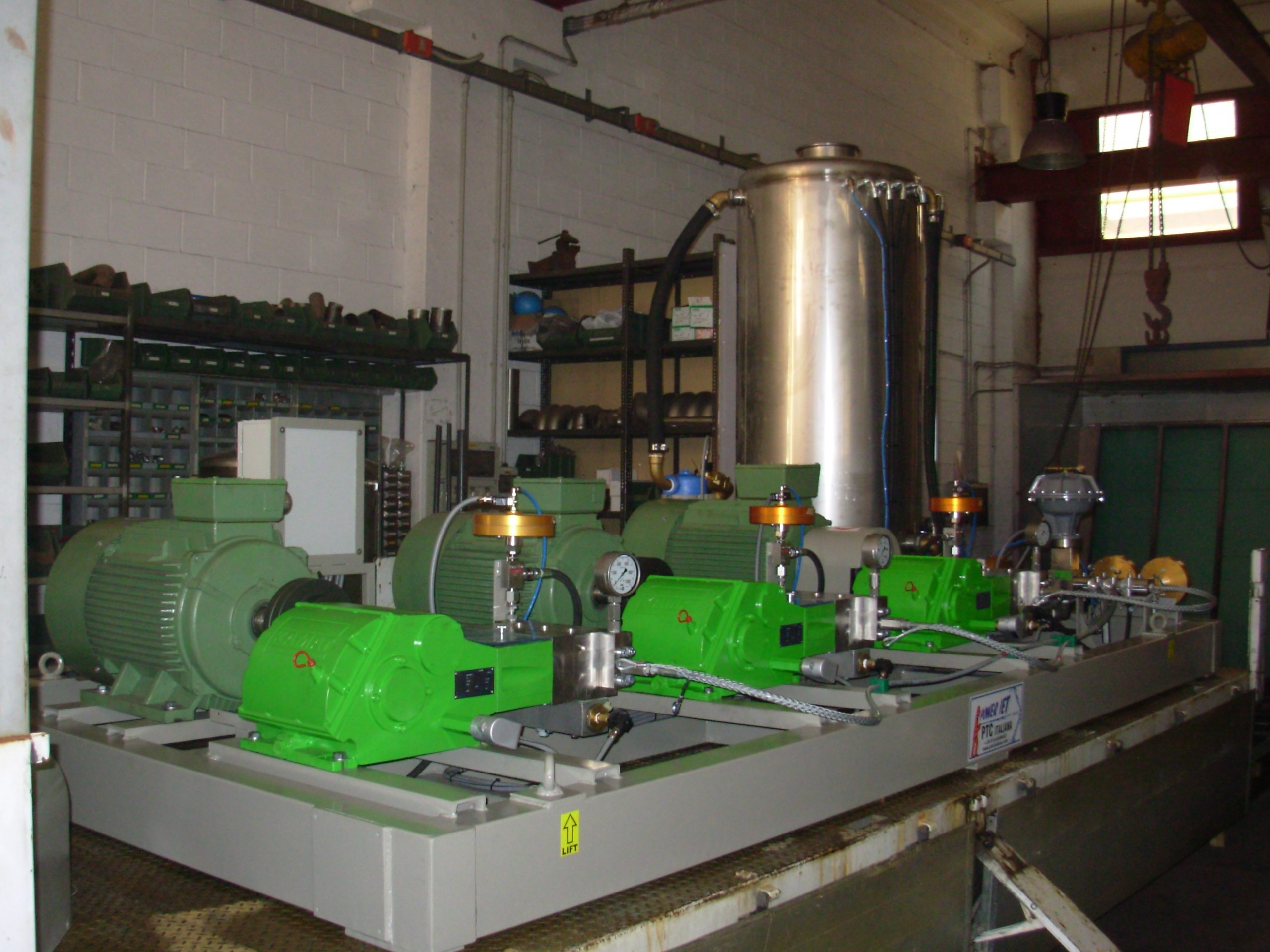
The plant built by PTC for this application consists of a skid with 3 units for the management of the extraction and testing process:
- 2 pumps for spindle extraction, with high flow rate (50 litres/minute) and low pressure (400/500 bar),
- 1 pump very high pressure (up to 1500 bar) and low flow rate (18 litres/minute) pressure test pump
Furthermore, an 800 liter water storage tank was installed on the unit.

